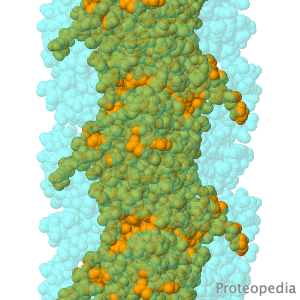Proteopedia:Featured JRN/4
From Proteopedia
| Line 2: | Line 2: | ||
<tr><td> | <tr><td> | ||
<imagemap> | <imagemap> | ||
| - | Image:Featured- | + | Image:Featured-pila-nc-6vk9.gif|center |
| - | default [[User:Nikhil Malvankar/ | + | default [[User:Nikhil Malvankar/Geobacter pilus structure and function]] |
</imagemap> | </imagemap> | ||
</td></tr> | </td></tr> | ||
Revision as of 23:37, 6 November 2022
Geobacter pili: surprising function.
Y Gu, V Srikanth, AI Salazar-Morales, R Jain, JP O'Brien, SM Yi, RK Soni, FA Samatey, SE Yalcin, NS Malvankar. Nature 2021 doi: 10.1038/s41586-021-03857-w |


